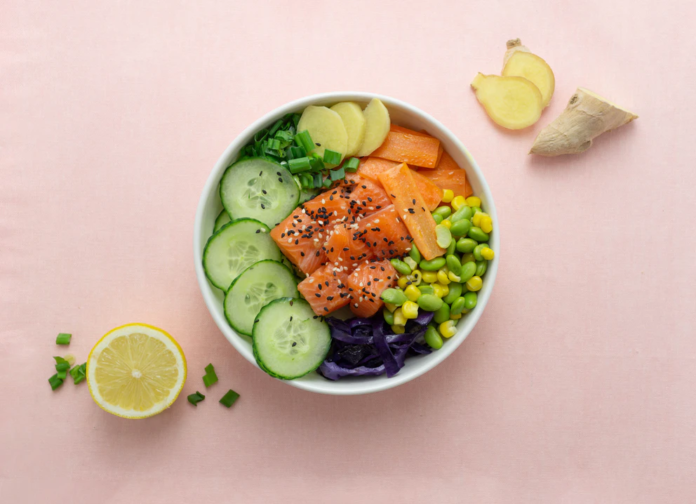A heart-healthy diet is chock-full of vitamins, nutrients such as omega-3 fatty acids and fiber while limiting salt, cholesterol, sugar, and trans fats. Keeping that in mind when planning meals for yourself and your family helps you build healthy habits, no matter where you are in your journey! How do you ensure a heart-healthy diet?
Eat Plenty of Seafood
Oily fish such as salmon, sardines, mackerel, cod, herring, trout, and tuna contain omega-3 fatty acids and are certainly more appetizing than taking fish oil. In addition, these fatty acids help prevent platelets from clumping together, improve your arteries’ condition, increase “good” cholesterol, and lower blood pressure, all of which are good for your heart!
The benefits don’t stop there, either. There is great protein in salmon, which is important for all muscles, and not just your heart. Plus, some people find that omega-3 fatty acids are good for their skin. Eat fish twice weekly to ensure you reap all the benefits.
Don’t Forget the Fruits and Veggies
Along with a healthy source of protein such as salmon protein, you want all the fiber and nutrients that come with fruits and vegetables. Fresh produce in dark red, green, and orange are the best. That means you should incorporate spinach, carrots, peaches, and berries into your meals and snacks. However, any fruits or vegetables, including frozen ones, are better than none.
Fortunately, you can get a variety of fruits and vegetables in your diet by making healthy shakes with frozen fruit, Greek yogurt, and just a touch of honey as a sweetener. You might also be surprised by how delicious meals can be when you combine vegetables with fish. There’s no shortage of options to keep things novel and tasty, from poke bowls to Ahi Tuna with cucumber salad to salmon chowder to ceviche. Finally, you can make various sauces from vegetables, which is a great way to ensure you get your three servings of vegetables daily.
Eat More Whole Grains
Many people consume plenty of grains; they’re just not whole grains. There can be some confusion about what whole grains mean, however. Some foods are made from simple grains, which use the least amount of the kernel, while others have multiple grains. The latter is made from multiple grains and not necessarily the entire kernel like whole grains. That’s where the nutrition comes from.
An easy switch to whole-grain bread and brown rice increases your consumption of whole grains and the fiber it provides. Try avocado toast with grilled salmon, adding rice to your poke bowl, or a bowl of whole-grain cereal with fruit if you want to keep it lighter.
Pay Attention to Labels
It’s important to read the label whether you’re trying to limit trans fats, which raise “bad” cholesterol, reduce how much salt you eat, or cut down on saturated fats and sugar. You might be surprised which products have more fat or sugar than you’d expect, even those you think of as healthy! You don’t need to cut your favorite snacks out; just make sure to eat them in moderation. And reading the label helps you do this once you understand what the label means. Of course, some foods are just too unhealthy to be part of a heart-healthy diet. Reading the labels can help you find alternatives if there’s a flavor you often crave, however.
Cook At Home
Finally, one of the easiest ways to ensure you stick to a diet that’s good for your heart is to cook at home! The only ingredients that end up on your plate are those you can choose. You can easily make healthy substitutions and watch portion size, too! Cooking your own meals gives you a sense of pride, and learning a new skill or improving an existing one can be fun for you and your family!
Keep in mind a few things when cooking. First, not every food is labeled, so you’ll want to find approximations for produce and other food online to ensure you’re not adding too many unhealthy ingredients. Secondly, it’s easy to overestimate portion size if you’re not careful, so a kitchen scale can be useful. It’s also possible to fall ill if you don’t thoroughly cook your food. Finally, be sure to check the internal temp of salmon or other fish as you learn to cook it.
For those who think cooking at home means you need to spend a lot of time at the grocery store, think again! With seafood delivery, fresh seafood is always available when you want it. And a little meal planning goes a long way toward keeping healthy and reducing wasted food (and your grocery budget along with it).
To wrap this up, remember that you don’t need to be an expert chef to make heart-healthy dishes at home. There are plenty of tutorials and videos online to help aspiring home chefs. In addition, you’ll find tips and tricks to save you time, money, and stress. And what’s better for your heart than eating a balanced diet and reducing stress? We can’t think of much!

